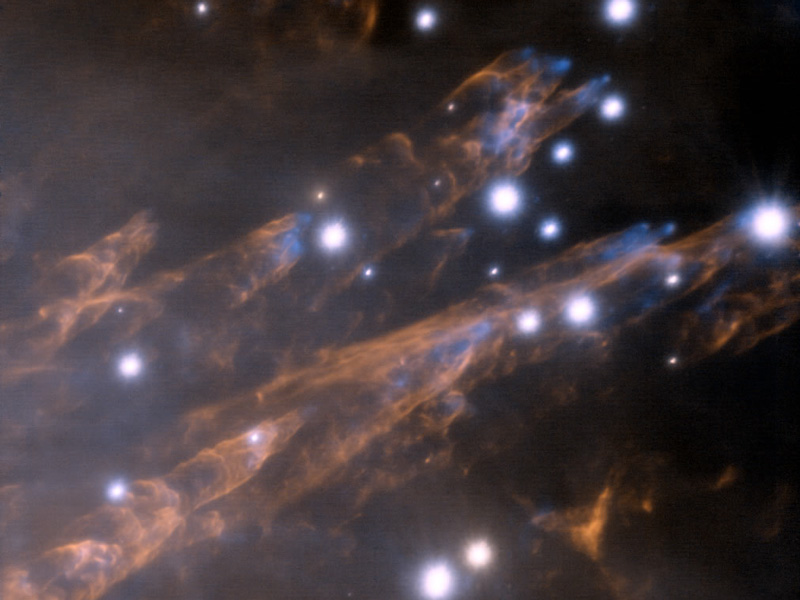Explanation: Why are bullets of gas shooting out of the Orion Nebula? Nobody is yet sure. First discovered in 1983, each bullet is actually about the size of our Solar System, and moving at about 400 km/sec from a central source dubbed IRc2. The age of the bullets, which can be found from their speed and distance from IRc2, is very young -- typically less than 1,000 years. As the bullets rip through the interior of the Orion Nebula, a small percentage of iron gas causes the tip of each bullet to glow blue, while each bullet leaves a tubular pillar that glows by the light of heated hydrogen gas. Pictured above, the Orion bullets were captured in unprecedented detail by the adaptive optics technology of the Gemini North telescope. M42, the Orion Nebula, is the closest major star forming region to us and filled with changing dust, gas, and bright stars. The Orion Nebula, is located about 1,500 light years away and can be seen with the unaided eye toward the constellation of Orion.
1999 2000 2001 2002 2003 2004 2005 2006 2007 2008 2009 2010 2011 2012 2013 2014 2015 2016 2017 2018 2019 2020 2021 2022 2023 2024 2025 |
Yanvar' Fevral' Mart Aprel' Mai Iyun' Iyul' Avgust Sentyabr' Oktyabr' Noyabr' Dekabr' |
NASA Web Site Statements, Warnings, and Disclaimers
NASA Official: Jay Norris. Specific rights apply.
A service of: LHEA at NASA / GSFC
& Michigan Tech. U.
|
Publikacii s klyuchevymi slovami:
Orion Nebula - Tumannost' Oriona
Publikacii so slovami: Orion Nebula - Tumannost' Oriona | |
Sm. takzhe:
Vse publikacii na tu zhe temu >> | |
